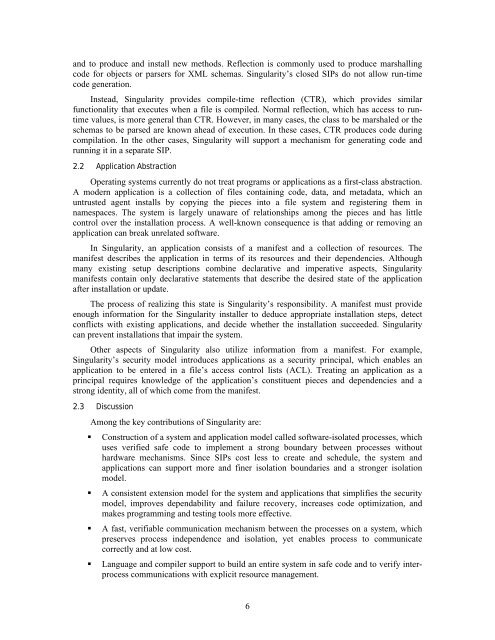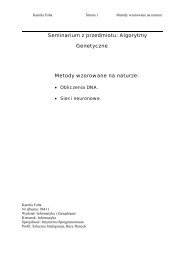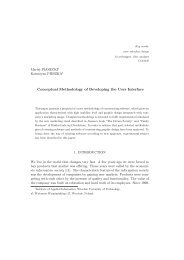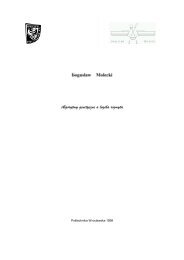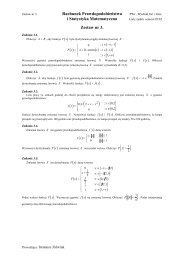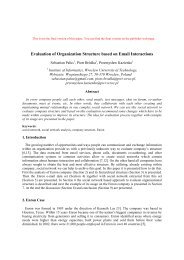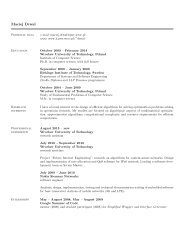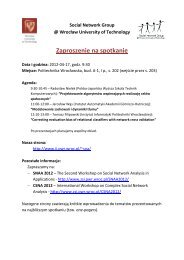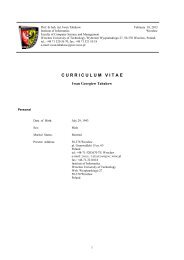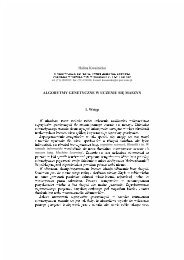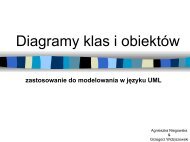Technical Report - Microsoft Research
Technical Report - Microsoft Research
Technical Report - Microsoft Research
Create successful ePaper yourself
Turn your PDF publications into a flip-book with our unique Google optimized e-Paper software.
and to produce and install new methods. Reflection is commonly used to produce marshallingcode for objects or parsers for XML schemas. Singularity’s closed SIPs do not allow run-timecode generation.Instead, Singularity provides compile-time reflection (CTR), which provides similarfunctionality that executes when a file is compiled. Normal reflection, which has access to runtimevalues, is more general than CTR. However, in many cases, the class to be marshaled or theschemas to be parsed are known ahead of execution. In these cases, CTR produces code duringcompilation. In the other cases, Singularity will support a mechanism for generating code andrunning it in a separate SIP.2.2 Application AbstractionOperating systems currently do not treat programs or applications as a first-class abstraction.A modern application is a collection of files containing code, data, and metadata, which anuntrusted agent installs by copying the pieces into a file system and registering them innamespaces. The system is largely unaware of relationships among the pieces and has littlecontrol over the installation process. A well-known consequence is that adding or removing anapplication can break unrelated software.In Singularity, an application consists of a manifest and a collection of resources. Themanifest describes the application in terms of its resources and their dependencies. Althoughmany existing setup descriptions combine declarative and imperative aspects, Singularitymanifests contain only declarative statements that describe the desired state of the applicationafter installation or update.The process of realizing this state is Singularity’s responsibility. A manifest must provideenough information for the Singularity installer to deduce appropriate installation steps, detectconflicts with existing applications, and decide whether the installation succeeded. Singularitycan prevent installations that impair the system.Other aspects of Singularity also utilize information from a manifest. For example,Singularity’s security model introduces applications as a security principal, which enables anapplication to be entered in a file’s access control lists (ACL). Treating an application as aprincipal requires knowledge of the application’s constituent pieces and dependencies and astrong identity, all of which come from the manifest.2.3 DiscussionAmong the key contributions of Singularity are:• Construction of a system and application model called software-isolated processes, whichuses verified safe code to implement a strong boundary between processes withouthardware mechanisms. Since SIPs cost less to create and schedule, the system andapplications can support more and finer isolation boundaries and a stronger isolationmodel.• A consistent extension model for the system and applications that simplifies the securitymodel, improves dependability and failure recovery, increases code optimization, andmakes programming and testing tools more effective.• A fast, verifiable communication mechanism between the processes on a system, whichpreserves process independence and isolation, yet enables process to communicatecorrectly and at low cost.• Language and compiler support to build an entire system in safe code and to verify interprocesscommunications with explicit resource management.6


